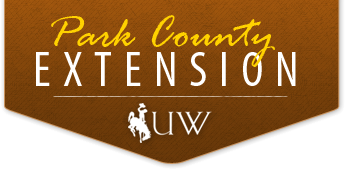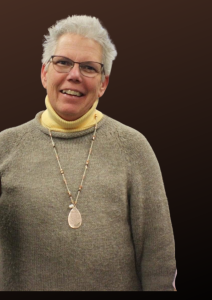How to get started
1. Find a club or create one
You can join an existing club in your area or create one! Starting your own 4-H club is easier than ever with Discover 4-H Club Curriculum Guides! Pick something that interests you, find an adult willing to be your Volunteer leader and start learning!
2. Enroll in Wyoming 4-H
4-H members are required to enroll in 4-H through Zsuite. Call our office or check out these Zsuite Tutorials for help.
3. Have fun & get involved
Each club provides leadership opportunities for members. As you complete projects in your chosen area you will also learn how to be an effective leader! As a 4-H member you can participate in events that let you showcase what you have learned or created like the County and State Fairs! Also, watch for events and camps offered by the County, Region and State 4-H Office.
What do 4-H members do?
4-H Projects
Wyoming 4-H members may choose from 45 different projects, or they may develop their own projects with the help of an adult volunteer leader. Projects are grouped into the areas of animal science, handicrafts, home economics, natural resources, and general, as well as technology.
4-H projects are built around three important principles: 1) Subject matter knowledge and skills, 2) Self-development , and 3) social interaction among people of different backgrounds, experiences, and ages.
Projects are real-life experiences that help members take responsibility for their own actions. Members develop good work habits and learn to work with others, sharing ideas and helping each other. Most project work is done in or near the home so the family can work and be together.
4-H Activities
4-H is fun! Members not only belong to clubs, but may also participate in activities such as fairs, contests, camps, tours, participation days, exchanges, and statewide events. These activities are designed to supplement club and project experiences. They offer opportunities to learn and practice skills beyond the opportunities available in the local club. Activities also provide a means for members to meet 4-H’ers from other clubs, communities, counties, and states.
Ivan L. Hobson is credited with starting the first 4-H clubs in Wyoming in 1913. Four kinds of clubs were promoted- crop production, potato, poultry, and garden and canning. Sheridan County hired the first full-time Boys’ and Girls’ Club agent in 1917. By 1919, state enrollment in youth clubs had increased to 1,562 members in 96 clubs.
The Wyoming 4-H program now reaches one in four youth ages 8-19 in the state.
4-H Basics
The 4-H Pledge
I pledge ….
My head to clearer thinking
My heart to greater loyalty
My hands to larger service, and
My health to better living
For my club, my community,
My country, and my world
The pledge was adopted in 1927 during the first National 4-H Club Camp in Washington D.C. Otis Hall, state 4-H leader in Kansas, was responsible for the original wording, which remained unchanged until 1973 when the words “and my world” were added.
How it Began
What is now 4-H began in the early 1900s, when youth agriculture clubs appeared in different parts of the country at the same time. These early efforts were organized in rural schools or through “Farmers’ Institutes” organized by agriculture colleges to bring the latest scientific information to farmers and their families.
In 1914, the U.S. Congress the Smith-Lever Act, formally establishing Extension work on a cooperative basis among the U.S. Department of Agriculture, the state land grant colleges, and counties in each state. Funds were included for youth programs, which became known as 4-H in 1924.
The Four H’s
The four H’s stand for Head, Heart, Hands, and Health. “Head, heart, and hands” was a familiar phrase with public speakers in the early 1900s. Educators expresses the liberalizing of conventional education (“the three R’s”) to include practical arts (“the three H’s”).
The three H’s were adopted by program organizers to reflect the educational theme of 4-H. A fourth “H” was added for health. Together the four H’s symbolized the development of the head, to think, plan, and reason; the heart, to care for others, accept citizenship responsibilities and develop positive attitudes; the hands, to be useful, helpful, and skillful; and health, to practice healthful living, enjoy life, and use leisure time productively.
The 4-H Emblem, Colors, Motto
The national 4-H emblem is a green four-leaf clover with the letter “H” on each leaf. The design was adopted as the national emblem in 1911. Congress has twice passed legislation protecting the 4-H name and emblem. Similar to a copyright, this protection means that the 4-H name and emblem cannot be used without authorization by the national organization.
Green and white are the 4-H colors. Green symbolizes springtime, life, and youth, while white stands for high ideals.
The 4-H motto is “To make the best better.” It was adopted in 1927 when the 4-H pledge was introduced.
How is 4-H organized
4-H in Wyoming
4-H is the youth education program of the University of Wyoming Extension. 4-H membership is available to all Wyoming youth ages 8-19.
4-H members are in every county in Wyoming and number 15,500 statewide. Although 4-H is traditionally considered to be a rural youth organization, today’s 4-H members live everywhere. In Wyoming, about 30 percent of the members live on farms and ranches, while 40 percent live in small towns (under 10,000) or rural non-farm areas. Another 30 percent live in towns and cities.
4-H Outreach
Local clubs are major 4-H delivery systems. Wyoming 4-H reaches young people in a variety of other ways. For example, “Blue Sky Below My Feet” is a video series on space available to school classrooms. 4-H is also a part of the youth phase of the Expanded Food and Nutrition Education Program (EFNEP). This program is designed to teach basic nutrition to members of families with limited incomes. 4-H materials are often used to enrich school curriculums in many areas. The classroom teacher may be the leader, or volunteer leaders may come into the schools.
About Extension
UW Extension is an off-campus educational arm of the University of Wyoming. Specifically, Extension provides research-based educational information to help Wyoming citizens solve problems and develop skills related to youth, family, community, and farm.
The UW Extension system has specialists housed on campus in Laramie and county Extension educators in each county so information from the University of Wyoming can be “extended” to people in Wyoming.
4-H Clubs
4-H work is implemented mostly in project clubs. A project club is a group of youth working with an adult volunteer leader on a single project, such as clothing, horses, or gardening. Some clubs are organized to include more than one project, such as a 4-H livestock club that includes members with projects in beef, sheep, and swine.
There are also 4-H community clubs. Members are enrolled in a wide variety of projects. Community club leaders provide overall leadership, but other volunteers work with members and their projects.
Most clubs range from 5 to 25 members. Each club may meet regularly throughout the year or only part of the year, depending on the project and the interests of both leaders and members.


